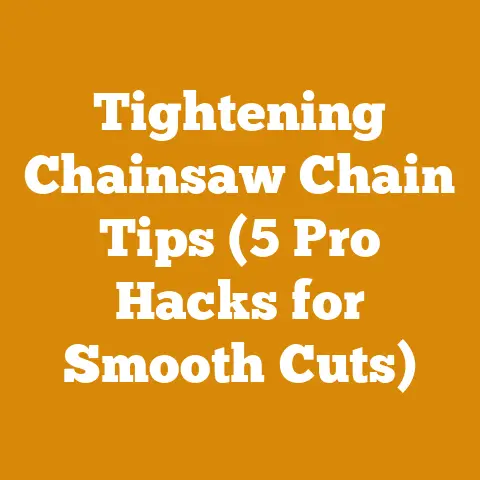Eucalyptus Root Management (3 Proven Techniques for Wood Processing)
Eucalyptus Root Management: 3 Proven Techniques for Wood Processing
Eucalyptus. The name itself conjures images of towering trees, aromatic oils, and, unfortunately for many, incredibly stubborn roots. Renowned for its rapid growth and dense wood, eucalyptus is a favorite in plantations worldwide. However, its robust root system, designed to seek out every drop of moisture, presents a significant challenge when harvesting and processing the wood. Dealing with these roots efficiently and cost-effectively is crucial for any wood processing operation involving eucalyptus. In this article, I’ll delve into three proven techniques for eucalyptus root management, breaking down the costs associated with each and offering practical tips for optimizing your budget.
Understanding the Challenge: Eucalyptus Root Systems
Before diving into the techniques, it’s essential to understand the nature of the beast. Eucalyptus roots are notoriously aggressive, often extending far beyond the tree’s canopy. They are known to:
- Spread widely: Laterally extending roots can reach distances exceeding the tree’s height.
- Penetrate deeply: Taproots can delve several meters into the ground, anchoring the tree and accessing deep water sources.
- Regenerate readily: Even small root fragments left in the ground can sprout new shoots, leading to persistent regrowth.
- Be incredibly dense: The root mass itself can be a significant obstacle, especially when trying to clear land or extract stumps.
These characteristics make eucalyptus root management a labor-intensive and potentially expensive undertaking. But with the right techniques and a clear understanding of the costs involved, you can effectively tackle this challenge.
Technique 1: Mechanical Extraction with Heavy Machinery
This is often the go-to method for large-scale eucalyptus harvesting operations. It involves using heavy machinery like excavators, bulldozers, and stump grinders to physically remove the roots and stumps from the ground.
The Process:
- Felling and Bucking: The trees are felled (cut down) and bucked (cut into manageable lengths).
- Stump Removal: An excavator or bulldozer is used to dig around the stump and pull it out of the ground, along with as much of the root system as possible.
- Root Grinding (Optional): A stump grinder can be used to grind down any remaining stump material and larger roots left in the ground.
- Site Cleanup: The extracted roots and stumps are hauled away, and the site is leveled and prepared for replanting or other uses.
Cost Breakdown:
This is where things get interesting, and where I can share my experiences of working with eucalyptus in different parts of the world. I recall a project in Portugal where we were clearing a large eucalyptus plantation to make way for vineyards. The sheer scale of the root systems was staggering. We had to bring in a fleet of heavy machinery, and the costs quickly added up.
- Machinery Rental: This is the most significant cost factor. Rental rates vary widely depending on the type of machine, its size, and the rental duration.
- Excavator: Expect to pay anywhere from \$200 to \$800 per day, or \$3,000 to \$12,000 per month.
- Bulldozer: Similar to excavators, with daily rates ranging from \$300 to \$1,000 and monthly rates from \$4,500 to \$15,000.
- Stump Grinder: Smaller, towable stump grinders can be rented for around \$100 to \$300 per day, while larger, self-propelled models can cost \$400 to \$800 per day.
- Hauling Equipment: Dump trucks or trailers are needed to haul away the extracted roots and stumps. Rental rates typically range from \$100 to \$500 per day.
- Labor: Skilled operators are needed to operate the machinery. Labor costs vary depending on location and experience.
- Heavy Equipment Operator: Expect to pay \$25 to \$50 per hour.
- General Laborer: Needed for site cleanup and other tasks. Expect to pay \$15 to \$30 per hour.
- Fuel: Heavy machinery consumes a significant amount of fuel. Diesel prices fluctuate, but you can expect to spend several hundred dollars per day on fuel.
- Maintenance and Repairs: Machinery breakdowns can be costly. Factor in a contingency for maintenance and repairs. I’ve seen small breakdowns turn into days of delays and hundreds of dollars in repair bills.
- Disposal Fees: Disposing of the extracted roots and stumps can incur additional costs. Landfill fees vary by location, but you can expect to pay \$50 to \$150 per ton.
- Permits and Regulations: Depending on your location, you may need permits to operate heavy machinery or dispose of wood waste. Permit fees vary widely.
Data Points and Statistics:
- According to a report by the Food and Agriculture Organization of the United Nations (FAO), the average cost of mechanical site preparation for forestry plantations ranges from \$500 to \$2,000 per hectare, depending on the terrain and the amount of root removal required.
- A study by the University of California, Davis, found that the cost of stump removal using heavy machinery can range from \$5 to \$20 per stump, depending on the size and species of the tree.
- The U.S. Energy Information Administration (EIA) provides up-to-date information on diesel fuel prices, which is a critical factor in estimating fuel costs for heavy machinery.
Cost Optimization Tips:
- Rent the right size machinery: Don’t overspend on equipment that is too large for the job.
- Negotiate rental rates: Shop around and compare prices from different rental companies.
- Schedule maintenance: Regular maintenance can prevent costly breakdowns.
- Plan your work efficiently: Minimize idle time and optimize the work flow to reduce fuel consumption and labor costs.
- Explore alternative disposal options: Consider chipping the roots and stumps for mulch or biomass fuel, which can reduce disposal fees and generate revenue.
Example Scenario:
Let’s say you need to clear a 1-hectare plot of land with an average of 100 eucalyptus stumps per hectare. You rent an excavator for 5 days at \$500 per day, hire an operator for \$40 per hour for 40 hours, spend \$500 on fuel, and pay \$100 per ton to dispose of the roots and stumps (estimated at 10 tons).
- Machinery Rental: \$2,500
- Labor: \$1,600
- Fuel: \$500
- Disposal: \$1,000
- Total Cost: \$5,600
This translates to a cost of \$56 per stump, which falls within the range reported in the University of California, Davis study.
Technique 2: Chemical Root Killers
This method involves using herbicides to kill the eucalyptus roots, preventing regrowth and making them easier to remove later. It’s often used in conjunction with other techniques, such as mechanical extraction or burning.
The Process:
- Cut the Stump: The tree is felled and the stump is cut as close to the ground as possible.
- Apply Herbicide: A systemic herbicide is applied to the freshly cut stump, targeting the vascular system and killing the roots.
- Wait: Allow several weeks or months for the herbicide to take effect and kill the roots.
- Remove or Leave to Decompose: The dead stump and roots can be removed mechanically or left to decompose naturally over time.
Cost Breakdown:
The cost of chemical root killers is generally lower than mechanical extraction, but it’s important to consider the environmental impact and the time required for the herbicide to take effect. I remember a situation in Australia where we were dealing with eucalyptus regrowth in a sensitive riparian area. We opted for chemical root killers to minimize soil disturbance, but it required careful planning and application to avoid harming the surrounding vegetation.
- Herbicide: The cost of herbicide varies depending on the type, concentration, and quantity.
- Glyphosate: A common broad-spectrum herbicide, available in various concentrations. Expect to pay \$20 to \$50 per gallon of concentrated solution.
- Triclopyr: Another effective herbicide for woody plants, often used in forestry applications. Expect to pay \$30 to \$60 per gallon of concentrated solution.
- Application Equipment: You’ll need a sprayer to apply the herbicide.
- Hand Sprayer: A small, handheld sprayer can be purchased for around \$20 to \$50.
- Backpack Sprayer: A larger, backpack sprayer is more efficient for larger areas. Expect to pay \$50 to \$200.
- Labor: Labor is required to cut the stumps and apply the herbicide.
- General Laborer: Expect to pay \$15 to \$30 per hour.
- Personal Protective Equipment (PPE): It’s essential to wear appropriate PPE when handling herbicides.
- Gloves, Eye Protection, Respirator: Budget around \$20 to \$50 for PPE.
Data Points and Statistics:
- A study by the University of Florida Extension found that the cost of controlling eucalyptus regrowth with herbicides can range from \$50 to \$200 per acre, depending on the density of the regrowth and the type of herbicide used.
- The Environmental Protection Agency (EPA) provides information on registered herbicides and their safe use.
- Local agricultural extension offices can provide guidance on the best herbicides for controlling eucalyptus in your area.
Cost Optimization Tips:
- Choose the right herbicide: Select an herbicide that is effective against eucalyptus and appropriate for your site conditions.
- Apply the herbicide correctly: Follow the manufacturer’s instructions carefully to ensure effective control.
- Use a calibrated sprayer: Calibrate your sprayer to ensure that you are applying the correct amount of herbicide.
- Spot treat individual stumps: Avoid broadcast spraying, which can harm non-target plants.
- Combine with other techniques: Chemical root killers can be used in conjunction with mechanical extraction or burning to improve effectiveness and reduce costs.
Example Scenario:
Let’s say you need to treat 50 eucalyptus stumps with herbicide. You purchase a gallon of glyphosate for \$30, a backpack sprayer for \$100, and spend 8 hours applying the herbicide at a labor rate of \$20 per hour. You also spend \$30 on PPE.
- Herbicide: \$30
- Sprayer: \$100
- Labor: \$160
- PPE: \$30
- Total Cost: \$320
This translates to a cost of \$6.40 per stump, which is significantly lower than mechanical extraction. However, it’s important to remember that this method requires time for the herbicide to take effect and may not be suitable for all situations.
Technique 3: Biological Control with Fungi
This is a more environmentally friendly approach that involves using naturally occurring fungi to decompose the eucalyptus roots. While still relatively new, this technique shows promise as a sustainable and cost-effective alternative to chemical and mechanical methods.
The Process:
- Identify Suitable Fungi: Research and identify fungal species that are known to decompose eucalyptus wood. Armillaria luteobubalina is one example of a fungus found in Australia that attacks eucalyptus.
- Inoculate the Stumps: Introduce the selected fungi to the freshly cut eucalyptus stumps. This can be done by applying fungal spores or mycelium to the cut surface.
- Provide Favorable Conditions: Create a moist and shaded environment around the stumps to encourage fungal growth.
- Monitor Decomposition: Observe the stumps over time to monitor the progress of decomposition.
- Remove or Leave to Decompose: Once the roots have sufficiently decomposed, they can be removed or left to decompose naturally.
Cost Breakdown:
Biological control is generally the least expensive option in terms of direct costs, but it requires more research and monitoring. It’s also a slower process than the other two techniques. I’ve been following research on this method in Brazil, where they are exploring the use of native fungi to control eucalyptus regrowth in harvested areas. The initial results are promising, but it’s still early days.
- Fungal Inoculum: The cost of fungal inoculum varies depending on the species and the supplier.
- Mushroom Spawn: Some mushroom species, like oyster mushrooms, can decompose wood and are relatively inexpensive to purchase. Expect to pay \$10 to \$30 per pound of spawn.
- Commercial Fungal Inoculants: Specialized fungal inoculants for wood decomposition may be more expensive, ranging from \$50 to \$200 per application.
- Application Equipment: You’ll need a sprayer or brush to apply the fungal inoculum.
- Hand Sprayer: A small, handheld sprayer can be purchased for around \$20 to \$50.
- Brush: A simple paintbrush can be used to apply the inoculum to the cut stump.
- Labor: Labor is required to cut the stumps and apply the fungal inoculum.
- General Laborer: Expect to pay \$15 to \$30 per hour.
- Monitoring: Regular monitoring is needed to assess the progress of decomposition. This may involve visual inspection or laboratory analysis.
- Labor: Expect to pay \$15 to \$30 per hour for monitoring.
- Laboratory Analysis: If laboratory analysis is required, expect to pay \$50 to \$100 per sample.
Data Points and Statistics:
- Research on biological control of eucalyptus roots is ongoing, and there is limited data available on the cost-effectiveness of this technique.
- The International Mycological Association promotes research and education in the field of mycology.
- Local universities and research institutions may be conducting research on biological control of eucalyptus in your area.
Cost Optimization Tips:
- Select the right fungi: Choose fungal species that are known to decompose eucalyptus wood and are adapted to your local climate.
- Source inoculum locally: Sourcing inoculum locally can reduce transportation costs.
- Create favorable conditions: Provide a moist and shaded environment to encourage fungal growth.
- Monitor decomposition regularly: Regular monitoring can help you identify any problems and take corrective action.
- Combine with other techniques: Biological control can be used in conjunction with other techniques, such as chemical root killers, to improve effectiveness.
Example Scenario:
Let’s say you need to treat 25 eucalyptus stumps with fungal inoculum. You purchase 2 pounds of oyster mushroom spawn for \$40, a hand sprayer for \$30, and spend 4 hours applying the inoculum at a labor rate of \$20 per hour. You also spend 2 hours monitoring the decomposition process at a labor rate of \$20 per hour.
- Fungal Inoculum: \$40
- Sprayer: \$30
- Labor (Application): \$80
- Labor (Monitoring): \$40
- Total Cost: \$190
This translates to a cost of \$7.60 per stump, which is comparable to chemical root killers. However, it’s important to remember that this method requires time for the fungi to decompose the roots, and the results may be variable.
Comparing the Techniques: A Cost-Benefit Analysis
To summarize, here’s a comparison of the three techniques, highlighting their pros and cons:
| Technique | Pros | Cons | Cost per Stump (Approximate) | Time Required | Environmental Impact |
|---|---|---|---|---|---|
| Mechanical Extraction | Fast, effective for large areas, complete removal of roots | High cost, soil disturbance, potential for erosion, requires heavy machinery | \$5 – \$20+ | Days/Weeks | High |
| Chemical Root Killers | Relatively low cost, minimal soil disturbance, prevents regrowth | Requires time for herbicide to take effect, potential for non-target damage | \$6 – \$10 | Weeks/Months | Medium |
| Biological Control with Fungi | Environmentally friendly, sustainable, relatively low cost | Slow process, requires research and monitoring, results may be variable | \$7 – \$12 | Months/Years | Low |
Choosing the Right Technique:
The best technique for eucalyptus root management depends on a variety of factors, including:
- Scale of the project: For large-scale clearing operations, mechanical extraction is often the most practical option.
- Budget: Chemical root killers and biological control are more cost-effective for smaller projects with limited budgets.
- Environmental concerns: Biological control is the most environmentally friendly option, while chemical root killers should be used with caution.
- Time constraints: Mechanical extraction is the fastest method, while biological control is the slowest.
- Soil type and terrain: Mechanical extraction may not be suitable for steep or rocky terrain.
- Local regulations: Check with your local authorities for any regulations regarding the use of herbicides or heavy machinery.
Actionable Takeaways and Next Steps
Managing eucalyptus roots effectively requires careful planning and a clear understanding of the costs involved. By considering the three techniques outlined in this article and weighing their pros and cons, you can choose the best approach for your specific situation.
Here are some actionable takeaways:
- Assess your needs: Determine the scale of the project, your budget, and your environmental concerns.
- Research your options: Investigate the different techniques and their associated costs.
- Develop a detailed budget: Estimate the costs of machinery rental, labor, materials, and disposal.
- Seek expert advice: Consult with forestry professionals, agricultural extension agents, or mycologists for guidance.
- Monitor your progress: Track your costs and adjust your budget as needed.
By following these steps, you can successfully manage eucalyptus roots and achieve your wood processing goals. Remember, a little planning can go a long way in saving you time, money, and frustration. And who knows, you might even discover a new and innovative way to tackle this challenging task! Good luck with your eucalyptus root management endeavors!






